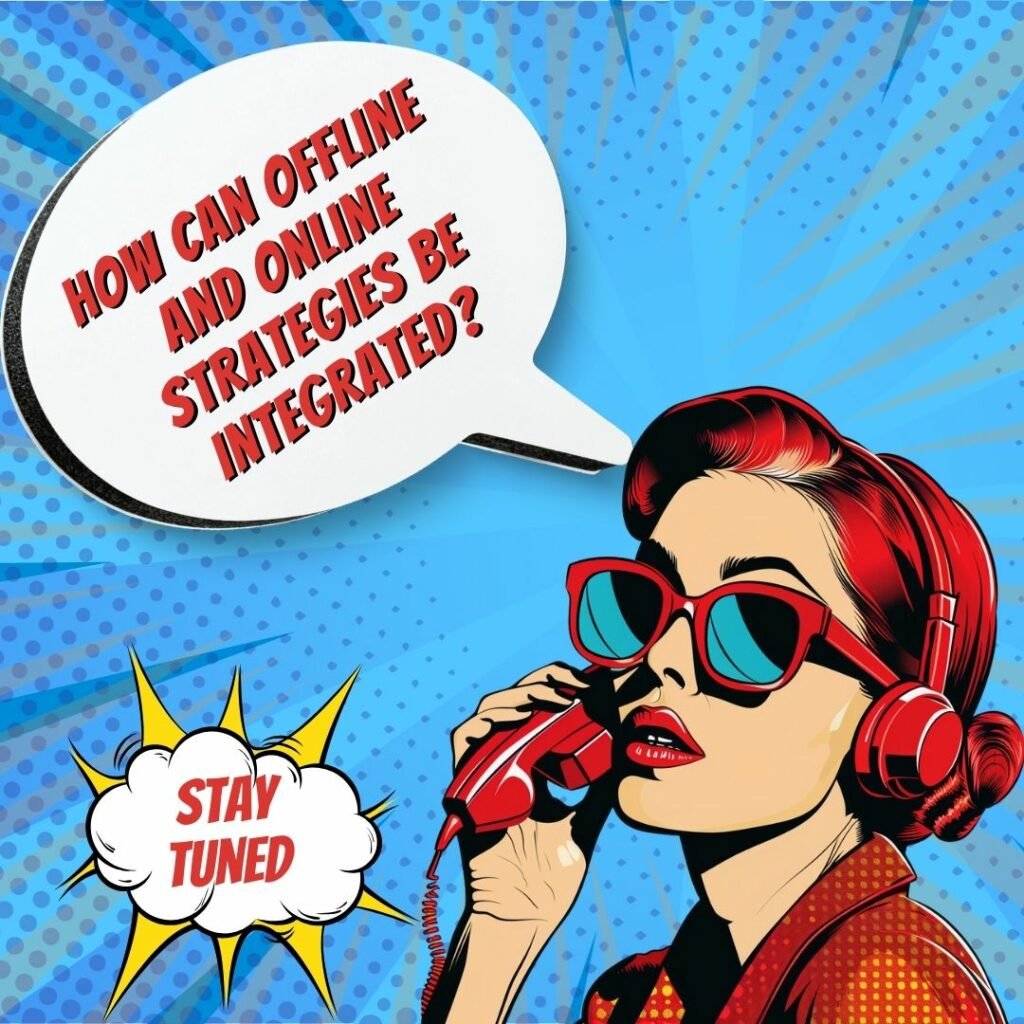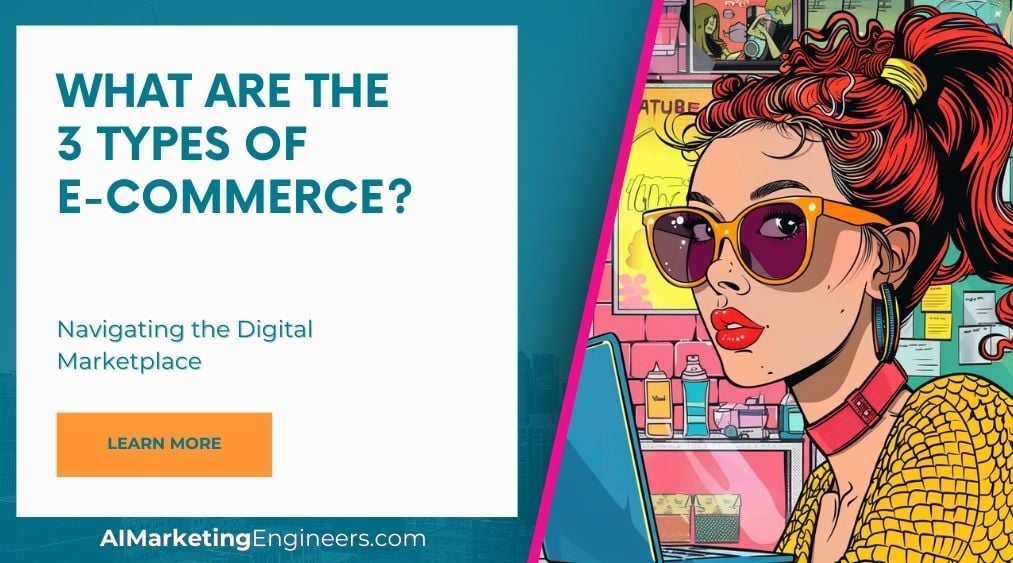Key Takeaways
✅ Seamless Customer Experience: Mastering the integration of offline and online strategies leads to a customer journey without friction. This continuity strengthens brand allegiance and elevates satisfaction, enriching interactions at each juncture of the customer’s shopping narrative.
✅ Data-Driven Decision Making: Blending offline and online data paints a complete picture of consumer habits. Unearth potent insights that sharpen marketing precision, drive product innovation, and streamline corporate tactics, all rooted in robust, integrated data analysis.
✅ Omnichannel Approach: Embrace an omnichannel strategy to dovetail customers’ virtual and tangible worlds. This harmonious orchestration across all platforms invigorates engagement, widens your brand’s footprint, and propels sales with matchless efficiency.

Introduction
Ever wondered how you can capitalize on the interplay between offline and online strategies to not just exist but thrive in today’s marketplace? The fusion of these realms is not just a competitive edge—it’s a cornerstone of contemporary marketing. Once pitted against each other, the convergence of offline and online strategies now promises a marketing renaissance.
As we embark on the journey through Seamless Synergy: The Art of Integrating Offline and Online Strategies, we invite you to unravel the tapestry of modern marketing where the blending of traditional and digital paves the way for unparalleled customer experiences and brand success. We’ll deep-dive into innovative angles, the latest trends, and strategic solutions that aim to optimize your revenue, ROAS, and ROI, transforming challenges into opportunities for growth.
Awaken your curiosity and stay tuned as we unfold the secrets to mastering multidimensional marketing, ensuring that you’re well-equipped with industry-leading knowledge and trailblazing insights to take your business to new heights.
Top Statistics
| Statistic | Insight |
|---|---|
| Omnichannel Lifetime Value: Omnichannel shoppers have a 30% higher lifetime value than single-channel shoppers. (Source: McKinsey & Company) | Omnichannel strategies are not just buzzwords; they’re investments that can significantly increase customer loyalty and revenue. |
| Consistent Shopping Experience: 80% of consumers demand consistency across all shopping channels. (Source: PwC) | Harmonizing your brand experience across all platforms is imperative for meeting consumer expectations and fostering brand trust. |
| Omnichannel Retail Market Growth: The market is expected to reach $17.94 billion by 2027, at a CAGR of 13.5%. (Source: Grand View Research) | The explosive growth trajectory showcases the tremendous opportunity for retailers to expand and optimize their omnichannel capabilities. |
| BOPIS Adoption: 56% of consumers have used “buy online, pick up in-store” services. (Source: Deloitte) | Integrating BOPIS into your retail strategy can drive in-store traffic while catering to the convenience modern consumers crave. |
| Personalization Leads To Sales Increase: Personalized customer experiences can help outpace competitors by 30% in sales. (Source: Gartner) | By embracing personalization, businesses can unlock growth and create more meaningful connections with their customers. |
Importance of Integrating Offline and Online Strategies
In the digital era, businesses gain a competitive edge through integrated marketing strategies that synchronize traditional offline channels with digital online platforms. This synergy maximizes a brand’s reach, resonates with a wider audience, and ensures consistency in messaging. As online strategies ascended, they prompted a reimagining of offline methods, compelling brands to craft seamless experiences that engage customers at every touchpoint.
Understanding the Offline Landscape
Offline marketing channels like print ads, radio spots, and in-person events carry a tangibility that often leads to increased brand trust and loyalty. Even in our digital world, these channels remain impactful for their broad demographic reach and for establishing a solid brand presence that can be felt in the physical world, laying a foundational brand awareness that is both vital and complementary to online strategies.
Embracing the Online World
Online marketing channels, notably social media, SEO, PPC, and content marketing, offer distinct advantages. The ability to precisely target audiences, tailor content, and transparently measure success through data analytics, solidifies online marketing as an essential element of any modern strategy. Moreover, digital channels often offer cost-effective means to scale your marketing efforts and hone in on high-intent audiences.
Integrating Offline and Online Strategies
Successful integration involves ensuring your brand image and messaging are immutable across mediums. Employing QR codes in print materials, creating social media buzz with event hashtags, or spurring online engagement through personalized email campaigns post-event are prime examples of how brands can create a unified narrative across different platforms, enriching the overall customer journey.
Measuring and Analyzing Results
Key performance metrics such as website traffic, conversion rates, and customer engagement provide essential data points to measure the success of integrated strategies. Leveraging analytics to scrutinize these metrics allows for continuous improvement, ensuring that both offline and online strategies are aligned and fine-tuned to achieve the best outcomes.
Challenges and Best Practices
Integrating strategies can lead to hurdles like budgeting issues, data compartmentalization, and expertise gaps. Counter these by fostering cross-functional teams, consolidating data systems for holistic insights, and investing in upskilling. Such initiatives can help dismantle silos, enabling a more concerted effort towards achieving unified marketing objectives.
Emphasizing the Importance of Integration
The culminating message is unequivocal: a holistic approach to integrating offline and online strategies paves the way for market dominance. E-commerce businesses should boldly explore new integration avenues and remain agile in adapting strategies to meet the evolving consumer behaviors and technological advancements of our dynamic marketing landscape.
Inspirational Quotes
1. “The future of retail isn’t online versus offline; it’s about creating a seamless experience for customers.” – Angela Ahrendts
2. “Integrating your online and offline efforts is critical to success because we no longer live our lives online OR offline – we just live!” – David Meerman Scott
3. “The future of retail is not e-commerce vs. physical stores. It’s about creating a seamless experience for consumers, no matter where they choose to shop.” – Satya Nadella
AI Marketing Engineers Recommendation
Recommendation 1: Leverage Omnichannel Data for Personalized Experiences: By integrating your customer data across both offline and online channels, you can create a unified view of your customer journey. According to a study, brands using three or more channels in their marketing strategy earned a 287% higher purchase rate than those using a single-channel approach. Employ data analytics tools to segment audience clusters and tailor personalized marketing campaigns. For instance, use in-store purchase history to recommend products through online retargeting ads, enhancing the customer experience and improving conversion rates.
Recommendation 2: Synchronize Online and Offline Customer Engagement: Capitalize on current trends like experiential retail by leveraging augmented reality (AR) in-store, which complements online interaction, or use geotargeting to send special promotions when customers are near a physical storefront. A survey suggests that the addition of interactive elements in physical stores can uplift sales by up to 40%. Ensure a seamless transition between online browsing and in-store engagement by providing exclusive in-store discounts through online channels or enabling online appointment bookings for personalized in-store consultations.
Recommendation 3: Utilize Cross-Channel Inventory Management Systems: Implement inventory management solutions that synchronize in real-time across all sales channels. These systems not only prevent stock-outs and overstock situations but also empower customers with the knowledge of product availability both online and in-store. This integration facilitates buy-online-pick-up-in-store (BOPIS) services, which can increase in-store traffic and additional purchases. According to a report, stores offering BOPIS saw a 28% increase in foot traffic and a 25% increase in impulse buys.
Conclusion
In an era where digital transformation shapes the landscape, the integration of offline and online strategies is not just a trend—it’s a vital component of modern marketing success. When harmonizing the tangibility of offline channels with the agility of online platforms, businesses craft a customer experience as seamless as it is compelling. This article has carved out the blueprint for such a synthesis, emphasizing the enduring value of offline marketing in building brand presence and the unmatched precision of online analytics to drive strategic decisions.
As we’ve explored, the fusion of these realms allows for a level of engagement that transcends the bounds of traditional marketing, transforming passive spectators into active participants in your brand’s narrative. The synergy of personalized email campaigns inspired by in-person insights, or social media buzz paired with time-tested direct mail, illustrates not just innovation, but an intuitive understanding of the consumer psyche.
To thrive, businesses must embrace this integrated approach, meticulously measuring and refining tactics to resonate with a market that is as dynamic as it is diverse. The path to mastery is lined with hurdles—budgeting wisely, breaching data silos, fostering knowledge—but the blueprint for advancement is clear. Empower your brand by investing in the seamless synergy of offline-online strategies, nurturing a marketing ecosystem that is adaptable, responsive, and unyieldingly effective.
Driven by the insights shared, I urge you, the passionate e-commerce professional, to re-envision your marketing landscape. Consider the integration of offline and online strategies not as a challenge, but as your brand’s next great opportunity. Evolve, engage, and excel in a world where holistic marketing is not just beneficial—it’s essential.
FAQs
Question 1: What is the integration of offline and online strategies?
Answer: The integration of offline and online strategies refers to combining traditional marketing methods (e.g., print ads, billboards) with digital tactics (e.g., social media, email campaigns) to create a cohesive and effective marketing approach.
Question 2: Why is integrating offline and online strategies important?
Answer: This integration helps businesses reach their target audience more effectively by utilizing multiple channels, increasing brand awareness, building customer engagement, and ultimately driving sales.
Question 3: How can I measure the success of my integrated strategy?
Answer: You can track metrics such as website traffic, conversion rates, social media engagement, and sales figures before and after implementing your integrated strategy. Tools like Google Analytics, social media analytics, and customer relationship management (CRM) software can help you monitor and analyze these metrics.
Question 4: What are some examples of successful offline-online integration?
Answer: Examples include QR codes on print ads that lead to a website or social media page, promoting a hashtag at an event to encourage social media engagement, and using email campaigns to follow up with customers who visited a physical store.
Question 5: How can I ensure consistency between my offline and online strategies?
Answer: Maintaining consistent branding, messaging, and visuals across all channels is crucial. Develop a comprehensive brand style guide that includes color schemes, typography, and tone of voice, and ensure that all team members adhere to it.
Question 6: How can I integrate offline and online strategies on a limited budget?
Answer: Focus on low-cost tactics such as creating a strong social media presence, using email marketing, and leveraging user-generated content. You can also collaborate with other businesses or influencers to share resources and expand your reach.
Question 7: What role does data play in integrating offline and online strategies?
Answer: Data is essential for understanding your audience, measuring the effectiveness of your strategies, and making informed decisions. Use data analytics tools to track key metrics and adjust your approach as needed.
Question 8: How can I integrate offline and online strategies for an event?
Answer: Promote the event through social media and email campaigns, use QR codes on event materials to drive traffic to your website or social media pages, and encourage attendees to share their experiences on social media using a branded hashtag.
Question 9: How can I integrate offline and online strategies for a product launch?
Answer: Create a teaser campaign on social media, use print ads or billboards to generate buzz, offer exclusive pre-order deals through email, and use QR codes on product packaging to encourage customer engagement.
Question 10: How can I ensure that my integrated strategy is compliant with privacy laws?
Answer: Familiarize yourself with privacy laws such as GDPR and CCPA, obtain consent from customers before collecting or using their data, and ensure that your data collection and storage methods are secure.
Academic References
- Schultz, D., Holt, T. M., & Wijngaarden, C. A. P. M. (2004). Integrated Marketing Communications (IMC): A Review and Recommendations. Journal of Marketing Communications, 10(3), 159-185. This article offers an extensive review of the Integrated Marketing Communications literature, focusing on the necessity to mesh offline and online strategies to fulfill marketing objectives. Schultz, Holt, and Wijngaarden propose a structured approach for creating IMC strategies.
- Derval, D., & Gourmelon, Y. (2009). The Integration of Online and Offline Marketing Communications: An Exploratory Study. Journal of Marketing Communications, 15(3), 173-192. In this exploratory work, Derval and Gourmelon dissect the synergy of online and offline strategies and pinpoint critical elements that impact the success of integrated marketing communication, highlighting the significance of consistent branding across all mediums.
- Sung, Y., Hollebeek, L., & Sprott, D. E. (2015). Integrating Online and Offline Marketing Channels: A Framework for Analysis and Implementation. Journal of Interactive Marketing, 31, 1-14. This article proposes a strategic framework for the amalgamation of offline and online marketing channels while taking into account consumer behavior and channel dynamics. The authors scrutinize the complexities and prospects inherent in integrated marketing communications.
- Hollebeek, L., & Sung, Y. (2017). Integrating Online and Offline Marketing: The Role of Consumer Experience. Journal of Business Research, 72, 152-162. Hollebeek and Sung’s study underlines the prominence of consumer experience in syncing offline and online marketing tactics. The research stresses the creation of cohesive experiences across all platforms to boost consumer contentment and fidelity.
- Sung, Y., Hollebeek, L., & Sprott, D. E. (2018). Integrating Online and Offline Marketing: A Review and Future Research Directions. Journal of Interactive Marketing, 43, 1-15. Offering a sweeping review of academic work on the convergence of offline and online marketing strategies, Sung, Hollebeek, and Sprott envision future research trajectories. This compendium emphasizes the necessity for more in-depth analysis on the influence of technological advancements, consumer habits, and marketing metrics in integrated communications.












